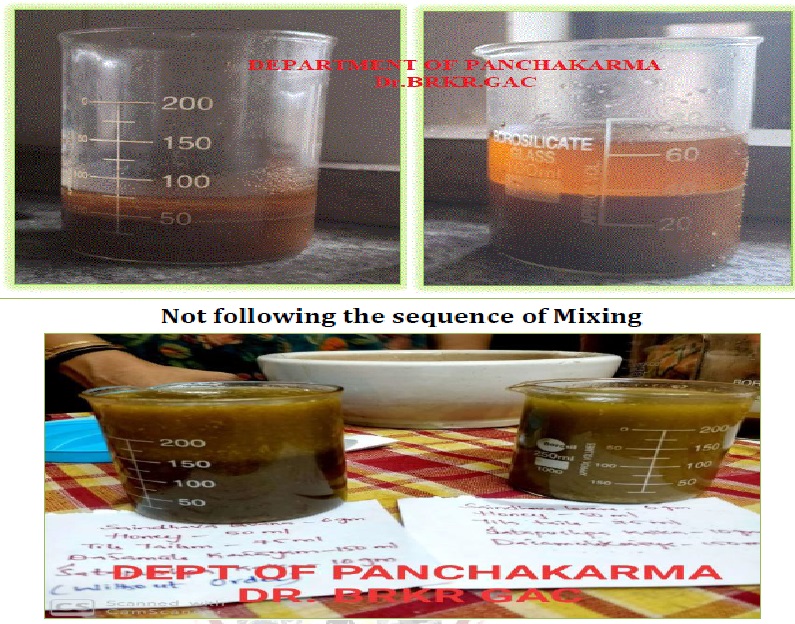A Conceptual Analysis and Importance of Kalka Dravya in Preparation of Niruha Basti
DOI:
https://doi.org/10.47070/ayushdhara.v10i5.1291Keywords:
Basti chikitsa, Niruha Basti, Kalka DravyaAbstract
Basti chikitsa is unique therapeutic procedure of Panchakarma (fivefold therapy) used in the management of Vatavyadhi. It is also considered as Ardhachikitsa. It is important to know the rationality behind the mixing of Basti ingredients before administration of Basti to the patients. Niruha Basti is a mixture of Makshika (honey), Lavana (salt), Kwaath (decoction) Kalka (fine paste obtained after wet grinding of the plant material) Kwaatha (decoction) and Avapa dravyas (additional ingredients). These ingredients are immiscible with each other. The question that comes to our mind is addition of which ingredient makes Vasti dravya homogenous mixture? As in principle homogenicity of the whole contents is mandatory before administration of Basti. Kalka is a form of paste made out of a green drug or a dry drug by rubbing on a stone by adding sufficient quantity of water to make a consistency of bolus. Some opinion that Kalka is the drug which gives potency to the whole combination of Niruha Basti. Kalka Dravya perhaps could act like a catalyst agent which improves the potency of Basti. But the primary role of Kalka dravya in the Basti seems to be to help in mixing both hydrophilic and lipophlic substnces to make it a proper emulsion. The emulsion nature of the basti dravya has got both cleansing, healing effect. In a way it has got multi-dimensional therapeutic effect. The present article is an attempt to understand the importance of Kalka dravya in Niruha basti, different combinations of Kalka are mentioned in Brihattrayi in different Basti yogas and possible mechanism of action of Kalka in Niruhabasti preparation has been theoretically analysed.
Downloads

Downloads
Published
Issue
Section
License
Copyright (c) 2023 AYUSHDHARA

This work is licensed under a Creative Commons Attribution-NonCommercial-ShareAlike 4.0 International License.


